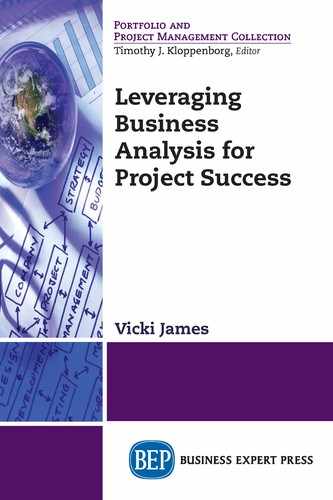One of the challenges in business analysis today is a misconception (especially in Information Technology) that a business analyst is a requirements analyst. While it is a business analysis activity to elicit, analyze, prioritize, and communicate requirements, they are responsible for so much more. Take the requirements out of projects, and there is still plenty for the business analyst to do.
If you were to compare tasks from the BABOK® Guide with tasks from the PMBOK® Guide, you would find some apparent redundancies between business analysis and project management. Instead, think of the outputs of the activities from the BABOK® Guide as inputs to the overall project management plan. In fact, the business analyst has much to do before there is a project and project plan, and much to do long after the project has closed in order to bring the most value to the organization for the project.
This section will explore what a business analyst does before, throughout, and after the project life cycle to bring value to the organization, as shown in Figure 7. It is not intended as a “how-to” guide for business analysis, but rather as an explanation of business analysis activities and how they enable organizations to get more value for the project dollar. It will demonstrate how business analysis can and should be an integral part of the organization’s overall business strategy. The discussion will be enhanced by following a case study of business analysis in action.

Figure 7 Phases of Business Analysis
The case study used is of a fictional requirements management tool implementation. I chose this as the case study in part to raise awareness of the advantages the requirements management tools can bring to an organization. Just as a cobbler may neglect to put shoes on his own children, business analysts often neglect to recommend solutions that will make their jobs easier. A requirements management tool is just one example of how we can make the job of business analysis easier. But I’ll save that full discussion for another book. Perhaps you’ll glean insights throughout the case study and begin preparing your business case for your own requirements management tool.
At the conclusion of each chapter in this section, you will be presented with a number of related questions. Think to a current or recently implemented project in answering the questions. This will be important so that the questions are applied to the same project throughout the section. Answer the questions for this project to help determine how the best practices described would enable the project to be more successful and bring more value to your business.
